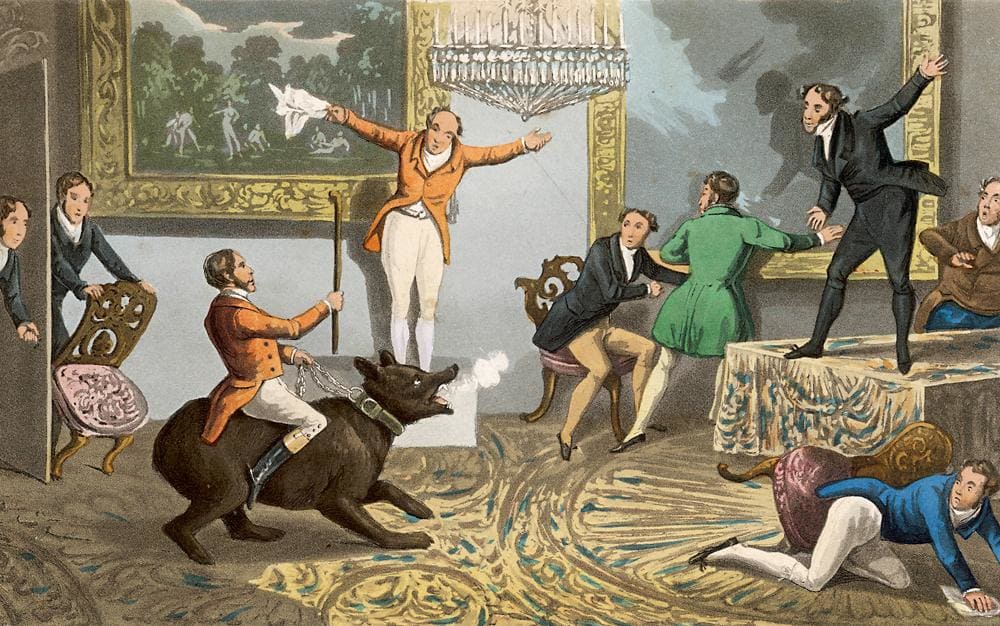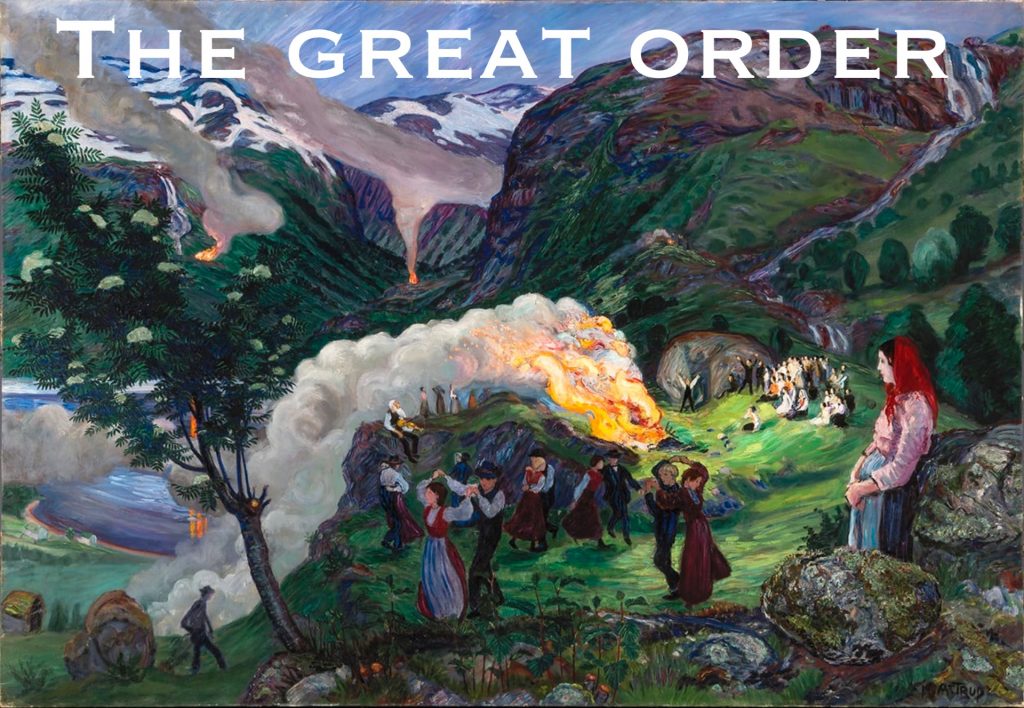By Jared at The Great Order
@ thegreatorder.com
The Mainstream and The Fringes
Video & Article
Video presentation is below
We hear much talk today about tearing down the old, and/or giving voice to those outside of the fold, outside of the established, traditional elements of a society.
There’s always going to be a bell curve in how traits and drives are distributed. This applies to both personal characteristics within individuals, as well as those traits disseminated throughout the wider society. Indeed, individuals act as components in the larger “body” that is society.
We’re going to speak very generally in this article, establishing principles we can later apply to more specific situations.
However, we do need some point of reference to broadly define mainstream behavior/lifestyles, vs. those on the fringes, the rebels, eccentrics, outliers.
Let’s begin by using marriage and family life as an example.
Pair bonding, the importance of joining two families, and the care and rearing of children present themselves as constants throughout history. These constants express reliably as a fundamental of human life, regardless of the debates that question how culture shapes people’s understandings and expressions of marriage.
Marriage and family practices give a people continuity and vitality. We can think of marriage and family life as a baseline structure upon which other aspects of a culture are built and made possible.
As an organizing force, let’s refer to those individuals called to the baseline structures as “pillars.” The main thrusts of their choices and actions form the backbone of the society.
That’s not to say that everyone who marries and produces offspring functions as an upright and contributing citizen. People of all temperaments and abilities create families (at least in the most basic sense of that term) for different reasons, and families range from happy and healthy to wildly dysfunctional.
Regardless, a culture is literally reborn and kept alive through the channels I’m calling its “pillars.” Marriage and family life functions as one such pillar.

Educational/philosophical structures (not necessarily via the government) can be considered another pillar. Production of food, tending to the sick and other vital services, and organized defense and military can be considered other pillars.
In contrast, certain individuals may find themselves called to color outside of the lines, providing the accoutrements to the pillar structures–the artistic designs, the embellishments, ornaments, variations, idiosyncracies.
Sometimes the people who embody this role in a society are literally artists, sometimes they’re people whose lifestyles fall outside of the normative family structures and jobs. A word of caution here–as with all metaphors, this illustration of a society’s “pillars” and “ornaments” has obvious limits.
I’d be remiss to act as if a civilization’s cultural, artistic creations do not serve a vital importance.
We can easily spin this another way and write an article demonstrating how artistic pursuits can provide great boons and keep a society alive, in a sense beyond physical survival. Even in older tribal societies, the bards and priests maintained the stories of old heroes or performed rites that gave that society cohesion, purpose, vision.
The integrating experience of creating, or simply taking in, works of art often can help awaken our highest potentials and open the full dimensions of our humanity. But we must remember that to even enjoy the conditions that allow for the creation of artistic and high cultural pursuits, we need the “pillar” structures and personalities to ensure our survival and perpetuation.
To think the ornaments can hold up the pillar is to make a grave mistake.
We need some kind of detente between these different sectors of society–and an understanding that both of these elements have always existed in cultures.
Needless to say, some individuals can function in both roles, pillar and ornament. But again, for the sake of argument, we’re keeping things simple here. Necessarily, the majority of people are suited for the pillar roles–though whether they realize their potential of actually fulfilling that role the best they can is another matter.
The baseline, pillar types need the flexibility to let the more fringe, ornamental types do their thing and not try to automatically stifle anything different. The standard is the standard for a reason, but it need not automatically squash anything that falls outside of it.

The outlier types have to understand that they’re able to inhabit their society’s fringes because of the pillars.
There’s not much that will come out of nursing a loathing for the pillar types, or narcissistically believing that they’re not special, or that they all secretly repress a desire to be freaks.
The normal person is special in their normal-ness, as a representative of the major part of the society’s body. The bulk of a society cannot consist of artists and philosophers, it would be too top heavy.
Even in ancient Greece when philosophy began flourishing and Athens seemed full of philosophical debates raging in public places, most citizens were, of course, farmers ( the “Society” section in this link shows most citizens of ancient Greece were farmers).
The more reflective outlier types who must necessarily step back from society to observe and ask questions need not lose their common touch.
Likewise, those of the pillars who don’t deal in intellectual work need not deny developing refined sensibilities, for every class can have its version of noble souls. This link shows that in Italy “rich and poor, aristocrats and peasants, have been sharing opera for centuries.”
Each would do well to stop seeing the other side as broken, and stop trying to make the other side like them.
The pillars have a responsibility to not use their position to oppress.
The outliers have a responsibility to not use their position to subvert.
If the pillar types want to crush the eccentrics, they may lose a lot of arts, inventions, innovations, and questions that lead to new advances. The culture will atrophy.
If the fringe types erode the pillars, the civilization will collapse. We need people producing the food, common goods and services, and defending the nation.
Again, this serves as a general guideline. Clearly, in today’s political climate, many of the fringe types are riled up and weaponized against society, spurned on by academics with a “burn it all down” philosophy.
Also, many whose actual nature would see them settling down into a mainstream lifestyle are sold a bill of goods about remaining a perpetual adolescent.
Suffice it to say for now that I’m not giving the artists and fringe types carte blanche to bring in chaos and constantly needle away at every convention and tradition. In fact, the outliers have much potential power to add to their society’s large-scale health and well-being, serving as the conduits of cultural aspirations and stories, as mentioned above.
For those who just can’t help themselves in their attempts to solely destroy and de-construct the culture they live in, I’ll just say this for now. There will always be some element of that in a society. But if the vast majority of the society is healthy and shares a vision and direction, the “burn it all down” types won’t pose a major threat.
Take all of the above to provide introductory food for thought on how a society with a cohesive culture–a shared history, value system, and sense of purpose–can understand and frame the differences within it.
Video Version (not a reading of this article):
Archived web pages are linked to as sources when available. These provide a permanent record of articles that have appeared on the Internet.
Copyright 2017-Present, The Great Order. All Rights Reserved Worldwide.
By Jared at The Great Order
@
thegreatorder.com
– Come Like Us on Facebook – Check us out on Instagram – Sign Up for our Newsletter –
Subscribe to our New NOW Youtube Channel













